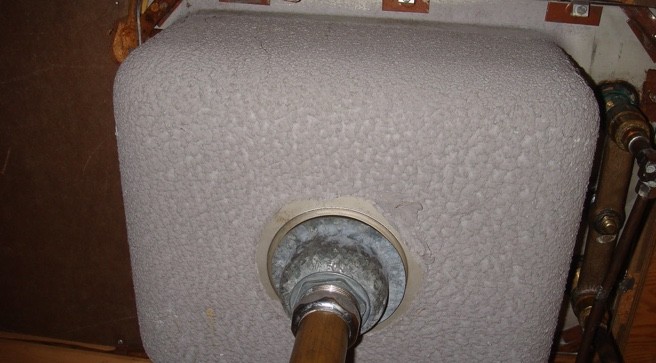Homes constructed before the 1980s may contain asbestos, a hazardous material found in various building components like cement, floor tiles, insulation, walls, and pipes. This guide aims to educate homeowners, families, and others on how to identify potential asbestos-containing materials in their homes and take necessary precautions. If you are planning any home renovations, such as demolishing walls or replacing flooring, caution is crucial as these activities can release harmful asbestos fibers into the air.
The Dangers of Asbestos: Why Identification Matters
Asbestos is a naturally occurring mineral composed of thin, durable fibers. While it was once widely used in residential construction for its heat resistance and insulation properties, it’s now known to be a serious health hazard. When asbestos-containing materials are damaged or disturbed, they release microscopic fibers into the air. Inhaling these fibers can lead to severe health problems, including:
- Mesothelioma: A rare and aggressive cancer that affects the lining of the lungs, abdomen, or heart.
- Lung Cancer: Asbestos exposure significantly increases the risk of developing lung cancer.
- Asbestosis: A chronic lung disease characterized by scarring of the lung tissue.
It’s important to note that asbestos-related diseases often have a long latency period, with symptoms potentially appearing 15 years or more after the initial exposure.
Where to Look: Common Locations of Asbestos in Your Home
While asbestos use has declined since the 1970s, many older homes still contain asbestos-containing materials. Here are some common areas where you might find asbestos in your home:
- Insulation: Asbestos was frequently used in pipe insulation, attic insulation (particularly vermiculite insulation), and wall insulation.
- Flooring: Vinyl floor tiles and the adhesive used to install them may contain asbestos.
- Roofing: Asbestos roofing felt and shingles were common in older homes.
- Siding: Cement asbestos board siding was a popular exterior cladding material.
- Textured Paint: Also known as “popcorn” ceilings or walls, these textures often contained asbestos.
- Drywall: In some cases, drywall and joint compound manufactured before the 1980s contained asbestos.
It’s crucial to remember that imported materials might still contain asbestos even if American manufacturers have phased it out. Keep an eye out for asbestos in imported roofing, siding, and caulking.
What Does Asbestos Look Like? Visual Cues and Identification
Identifying asbestos visually can be challenging, as it often blends in with other materials. While a definitive identification requires laboratory testing, here are some visual cues to look for:
- Appearance: Asbestos ore can be white, green, blue, or brown. Processed asbestos typically breaks down into fluffy fibers.
- Damaged Materials: Check for small, fuzzy fibers in damaged materials. They might resemble frayed fabric.
- Location: Asbestos is more likely to be found in specific areas of older homes as described above.
However, visual inspection alone isn’t enough to confirm the presence of asbestos.
Common Scenarios of Asbestos Exposure in the Home
Understanding common exposure scenarios can help you take precautions and prevent accidental asbestos release:
-
Attic Renovation: Disturbing vermiculite insulation during attic renovations can release asbestos fibers.
-
Brake Work in Home Garages: Older brakes, especially those made in foreign countries, may contain asbestos.
-
Drilling into Drywall: Drilling into asbestos-containing drywall will release fibers into the air.
-
Removing Vinyl Floor Tiles: Scraping old vinyl floor tiles can expose asbestos-containing adhesive.
-
Popcorn Ceiling Removal: Scraping a popcorn ceiling without proper safety measures can release asbestos fibers.
-
Cutting Insulation on Pipes: Damaged asbestos insulation on plumbing systems may release fibers when cut.
What to Do If You Suspect Asbestos: Testing and Remediation
If you suspect that a material in your home contains asbestos, take the following steps:
- Do Not Disturb: Avoid touching, moving, or damaging the material.
- Isolate the Area: Restrict access to the area to prevent accidental disturbance.
- Professional Testing: Hire a certified asbestos inspector to collect samples and have them tested by an accredited laboratory. Search online for “asbestos inspection” to find a licensed expert in your area. The U.S. Department of Commerce offers a list of accredited asbestos laboratories online.
- Remediation: If asbestos is confirmed, hire a licensed asbestos abatement contractor to safely remove or encapsulate the material.
Asbestos Safety: Dos and Don’ts
To minimize your risk of asbestos exposure, follow these safety guidelines:
Dos:
- Avoid contact with dangerous asbestos materials.
- Take precautions to avoid damaging materials that may contain asbestos.
- Consult your home inspector or real estate agent about known asbestos risks.
- Hire trained professionals for asbestos inspections, testing, repairs, or removal.
- Contact your local or state regulatory agency before demolishing a building.
Don’ts:
- Do not saw, sand, scrape, drill, or disturb materials that may contain asbestos.
- Do not sweep, vacuum, or dust debris that may contain asbestos.
- Do not collect asbestos samples for testing without proper training.
- Do not perform work on or near asbestos materials unless trained and certified.
- Do not remove asbestos unless repair or concealment is impossible, and there’s a high risk of exposure.
- Do not dispose of asbestos materials with normal household waste.
Understanding Asbestos Exposure and Testing
It generally takes repeated asbestos exposures for related conditions to develop. However, heavy, short-term asbestos exposures have been known to cause disease. If you are concerned about asbestos exposure, consult your doctor. They can order scans to detect signs of related diseases.
The most common testing method, Polarized Light Microscopy (PLM), can range from $20 to $100 per sample. DIY test kits are available, but hiring a certified professional offers peace of mind that the job will be safely completed. The total cost of labor can run between $350 and $600.
Consequences of Violating Asbestos Laws
Activities involving asbestos must follow U.S. EPA regulations and state asbestos laws. Violations can lead to written warnings, criminal charges, prison time, and daily civil penalties reaching $25,000.
Conclusion
Identifying potential asbestos-containing materials in your home is crucial for protecting your health and the health of your family. By understanding where asbestos is commonly found, what it looks like, and the proper safety precautions to take, you can minimize your risk of exposure. If you suspect asbestos is present, always consult with qualified professionals for testing and remediation.

